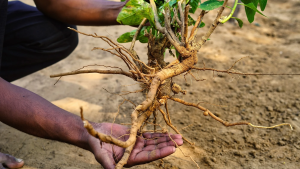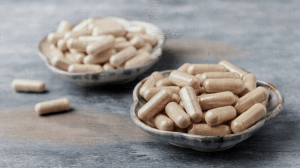Have you ever heard of Ashwagandha? Scientifically known as Withania somnifera (WS), this extraordinary herb is native to India, the Middle East, and Africa. With a legacy steeped in traditional medicine, particularly within Ayurveda, Ashwagandha has been used for over 3,000 years to address many health concerns.

Native to regions such as Baluchistan, Afghanistan, Sri Lanka, Pakistan, Nepal, China, and India, Ashwagandha has been a cornerstone of traditional medicine for centuries.
While its historical role in healing is well-documented, modern science is revealing new possibilities for its use. INTI International University’s Pro Vice-Chancellor (Research and Innovation), Professor Dr Wong Ling Shing, leads this. Together with a team of esteemed researchers, Professor Dr. Wong recently published a study titled “A Comprehensive Review of Phytochemicals of Withania somnifera Dunal (Solanaceae) as Antiviral Therapeutics.” Their finding suggests that Ashwagandha may be more than just a traditional remedy – it could hold significant promise as a potent antiviral agent.

Professor Dr Wong Ling Shing, Pro Vice-Chancellor (Research and Innovation) at INTI International University, leads a research revealing the antiviral potential of Withania somnifera (Ashwagandha).
Traditionally, Ashwagandha is celebrated for its ability to reduce anxiety and stress. Classified as an adaptogen, it helps the body manage stress while promoting physiological balance. It is mainly known for lowering cortisol levels, which are often elevated during stressful periods. Today, Ashwagandha is readily available in convenient forms like capsules, widely sold in pharmacies.

Ashwagandha, an ancient herb with modern applications, is now widely available in pharmacies, online stores, and supermarkets in various convenient forms.
Professor Dr Wong’s research offers a fresh perspective on this ancient herb. His study highlights the antiviral properties of Ashwagandha’s phytochemicals, particularly withanolides, demonstrating strong antiviral properties. These compounds have shown potential to inhibit viruses such as the Human Immunodeficiency Virus (HIV), influenza, and SARS-CoV-2 (COVID-19). “Current research indicates that WS phytochemicals could be developed into effective therapeutic agents for COVID-19,” noted Professor Dr. Wong.
But how does it work? The study delves into the molecular mechanisms behind Ashwagandha’s antiviral effects. These mechanisms include targeting viral proteins to inhibit replication, interacting with host cell receptors to block virus entry, and boosting immune responses, such as enhancing nitric oxide production, which strengthens antiviral defences.
While these findings are promising, the therapeutic potential of Ashwagandha as an antiviral agent remains in its early stages. Further research, including in vitro (lab-based) and in vivo (animal-based) studies, is necessary to validate these results and pave the way for clinical trials. Professor Dr. Wong’s study also emphasises the importance of identifying additional phytochemicals responsible for these effects and exploring innovative delivery methods to enhance efficacy.
Despite these challenges, the research marks a significant step forward. The evidence positions Withania somnifera (WS) as a compelling candidate for developing new antiviral therapies. With continued scientific exploration, Ashwagandha could play a transformative role in combating viral infections, offering hope for innovative and effective treatments in the future.